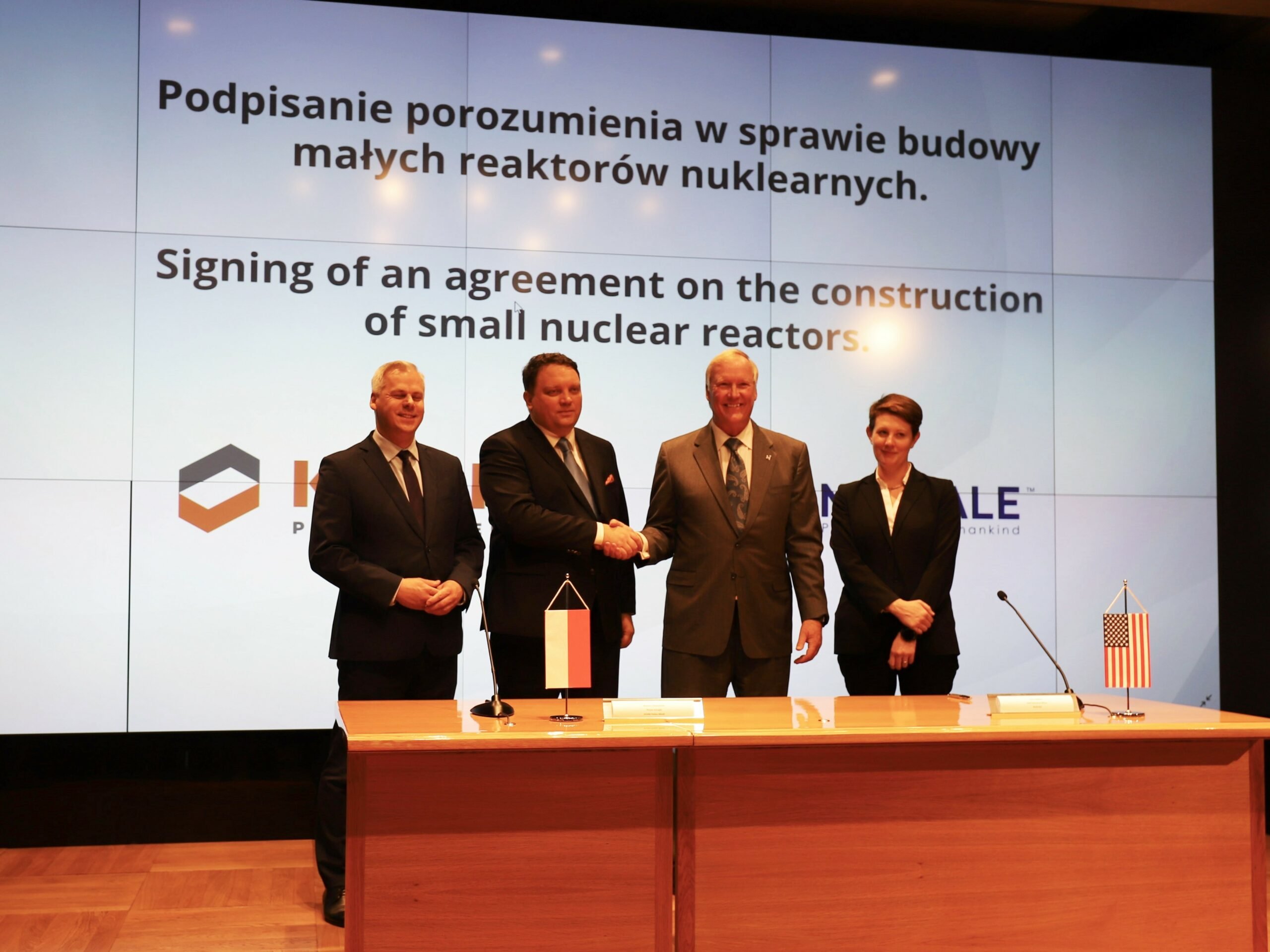
Discussions about nuclear power plants are usually quite black and white. Supporters and opponents are squarely opposed to each other. Who of the two will win is still uncertain. But there is a clear trend: the list of new nuclear power projects is expanding rapidly.
This is especially true of small modular nuclear power plants, otherwise known as SMR reactors. At least 70 companies around the world are working on this technology. These include Terrapower from the U.S. that is co-funded by Microsoft founder Bill Gates. In France, a number of companies have joined forces on the “NUWARD” project and in the UK, Rolls Royce is developing small-scale nuclear power plants.
Poland drew attention this past week with two orders at the same time. One from the Polish mining company KGHM that wants to order at least four and perhaps even twelve of these SMR reactors from the American company Nu Scale Power, a subsidiary of the Fluor Corporation.
Read our story about the KGHM project here.
At the same time, another Polish company, chemical producer Synthos, has signed a preliminary contract with a group of Canadian and American companies for what are known as BWRX-300 reactors. These include the companies Cameco, GE Hitachi Nuclear Energy and GEH SMR Technologies Canada.

In its infancy
Geert Verbong, professor at the Eindhoven University of Technology (TU/e), is not yet convinced. “The fact is that these kinds of SMR reactors have never been used anywhere on a large scale,” he says. They are still in the experimental phase. On top of that, he adds, they run into the same problems as existing and new generation large nuclear power plants. “That means opponents will not see any benefit in them,” he contends.
The only major advantage Verbong sees is that small modular reactors might be good to use as flexible baseline energy supplies. A disadvantage of large nuclear power plants is that, from a cost point of view, they are only interesting if they are able to guarantee a fixed electricity supply. But that is precisely the problem that sustainable energy also has. There are periods with a lot of wind and solar power and periods when it is less. Small SMR reactors might be suitable for filling those gaps. Large nuclear power plants are far too expensive for that.
Canada
Canadian nuclear energy expert Marcel de Vos – a child of Dutch immigrants – is slightly more positive about the prospects. He also agrees that it is a technique that still needs to be developed further. He himself is not directly involved in this on behalf of the Canadian regulator CNSC, although he is indirectly involved. The CNSC is the body that issues permits for new nuclear power plants in Canada. There is close cooperation with the International Atomic Energy Agency (IAEA) and regulators bodies and engineers from other countries, in particular the US and the UK. “The goal is to improve and bring technical regulations and safety standards into line with each other as much as possible.”
At present, things are not looking all that bad for SMR reactors, according to De Vos. “I see technological potential for these new reactor designs with improvements in safety, ease of operation and maintenance, and in the management of waste streams. I also see no reason why these kinds of plants would not be suitable for a densely populated country like the Netherlands. In China they are already building such a facility and in Canada there are two projects in the licensing phase.”
These concern a micro nuclear power plant of just 5 MWh from Chalk Rivers Laboratories and the Darlington New Nuclear Plat Project (300 MWh).
Yale Climate Connections
Interestingly, there is not nearly as much discussion in North America about the danger of nuclear accidents or the problematic storage of nuclear waste. It is more about cost and other environmental issues over there. This is evident in a documentary by Yale Climate Connections, and in other sources.
The energy experts interviewed in this documentary see the main environmental disadvantage of SMR reactors is that they consume a lot of water, which is a scarce resource, especially as the earth continues to heat up.
Saul Griffith, an Australian-American inventor and CEO of Other Lab, points out that nuclear power is relatively safe and reliable compared to other forms of energy. “But politically speaking, of course, there is a lot of backlash, and personally I worry about whether there will be enough cooling water available.” In the long run, he doubts that clean and reliable nuclear power can compete with wind and solar power.
Daniel Kammen, a nuclear physicist at the University of California Berkeley, hopes there is a place for nuclear power in the future energy mix. “But there’s still a lot of research to be done in order to make it competitive.”
Arjun Makhijani from the Institute for energy and Environmental Research takes a negative view. He sees only one reason why there is suddenly so much focus on small nuclear power plants, “It’s because the big nuclear power plants have failed.” Another drawback in his opinion is the time factor. It may be another ten years before SMR reactors can be safely rolled out on a large scale. This time frame is too long for the sake of the climate, and it is highly likely that solar panels and wind turbines will be much cheaper than they are today.
Bill Gates
One of the most prominent proponents of SMR reactors is Microsoft founder Bill Gates. Earlier this year, in an interview with CNN reporter Anderson Cooper, he commented that the world needs major technology breakthroughs in order to resolve the climate problem. Gates certainly sees a role for SMR reactors in this.
That is why Gates is investing in the company Terrapower. He also invests in many other companies that focus on green technologies, ranging from companies that store CO2 to companies that make meat substitutes.

